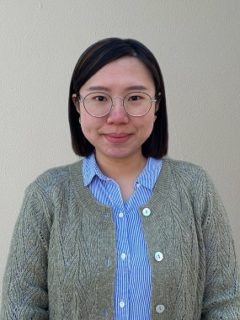Hsuan-Heng Lu
Hsuan-Heng Lu, M. Sc.
PhD student
Bioprinting of composite hydrogels for muscle tissue regeneration
Supervisor: Prof. Dr.-Ing. habil. Aldo R. Boccaccini
Biofabrication is an automated 3D printing approach suitable to produce cell-laden constructs mimicking the extracellular matrix (ECM) of the tissue to be repaired and able to guide cells to maturate into tissues with sophisticated structures and functions [1][2]. Alginate di-aldehyde (ADA) is commonly applied in the field of tissue engineering due to its biocompatibility and tunable properties [3]. In this project, ADA-based hydrogels incorporating inorganic bioactive fillers (BIF), e.g. bioactive glasses, will be investigated with the aim of developing 3D printable composite bioinks that biochemically stimulate and support muscle tissue regeneration. After detailed optimization, bioinks will be integrated into a bioreactor system for muscle cell growth and maturation. The project (TP B03) is within the framework of the DFG funded SFB/Transregio TRR 225 („From the fundamentals of biofabrication towards functional tissue models“) and will be carried out in close collaboration with Prof. Dr.-Ing. Frank Döpper and Dr. Sahar Salehi from University of Bayreuth.
[1] Y. J. Seol, H. W. Kang, S. J. Lee, A. Atala, and J. J. Yoo, “Bioprinting technology and its applications,” Eur. J. Cardio-Thoracic Surg., vol. 46, no. 3, pp. 342–348, 2014.
[2] J. Groll et al., “Biofabrication: Reappraising the definition of an evolving field,” Biofabrication, vol. 8, no. 1, 2016.
[3] S. Reakasame and A. R. Boccaccini, “Oxidized Alginate-Based Hydrogels for Tissue Engineering Applications: A Review,” Biomacromolecules, vol. 19, no. 1, pp. 3–21, 2018.

